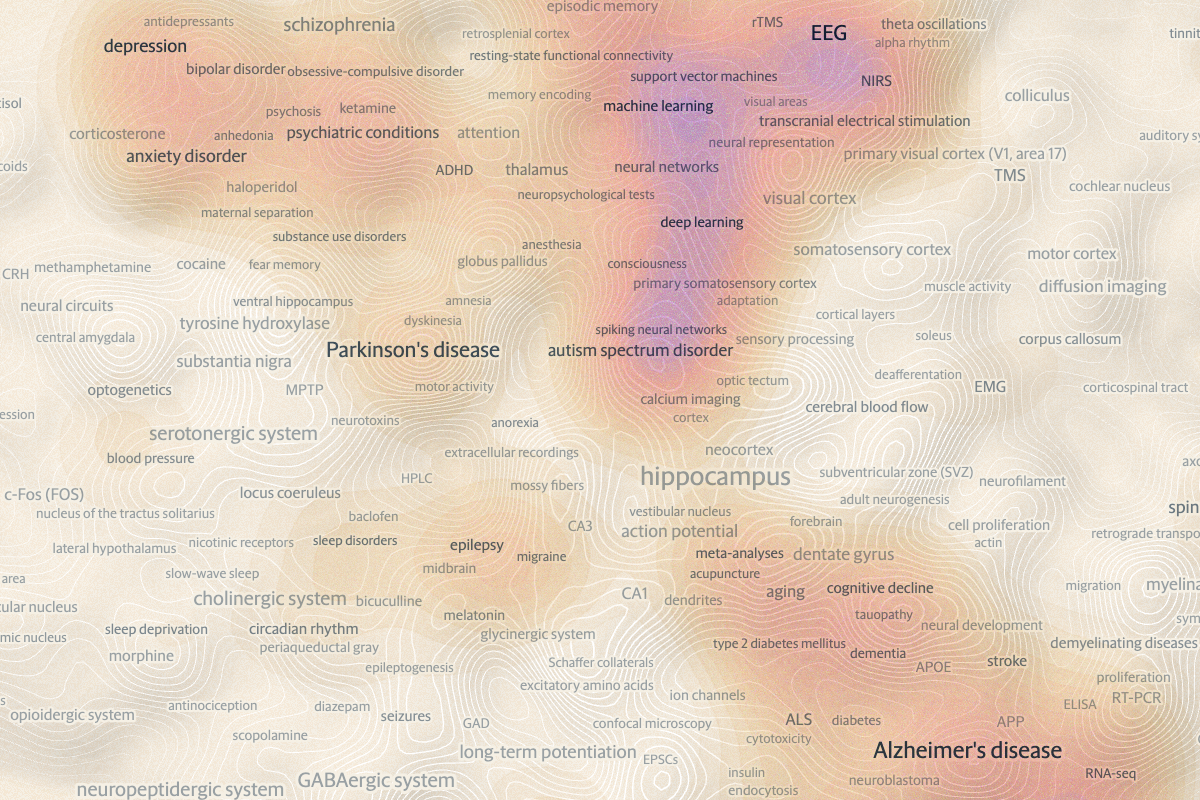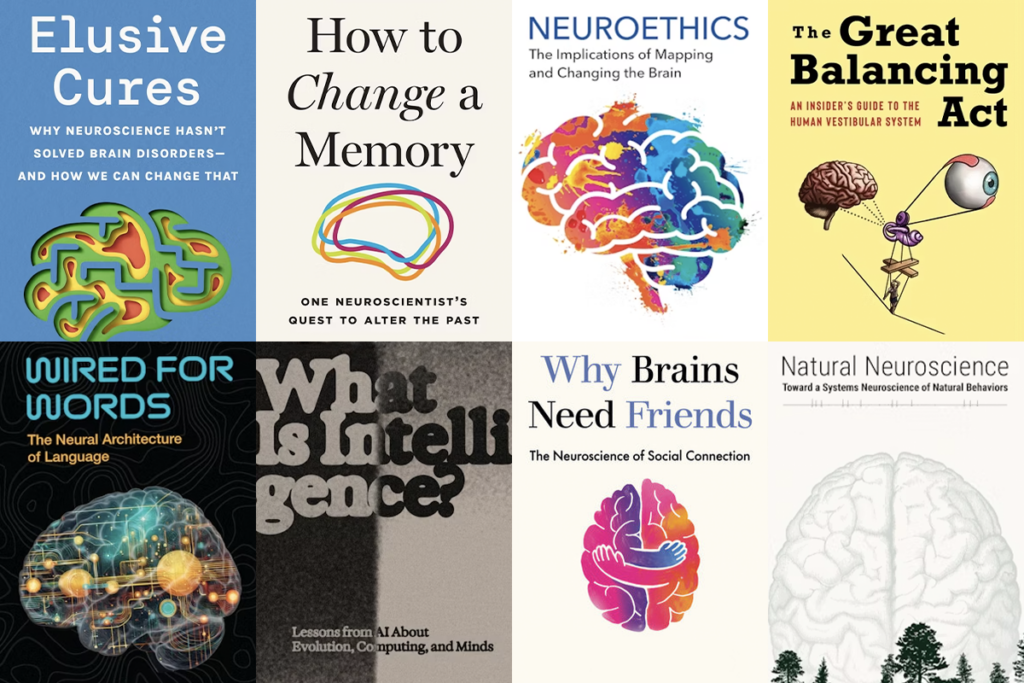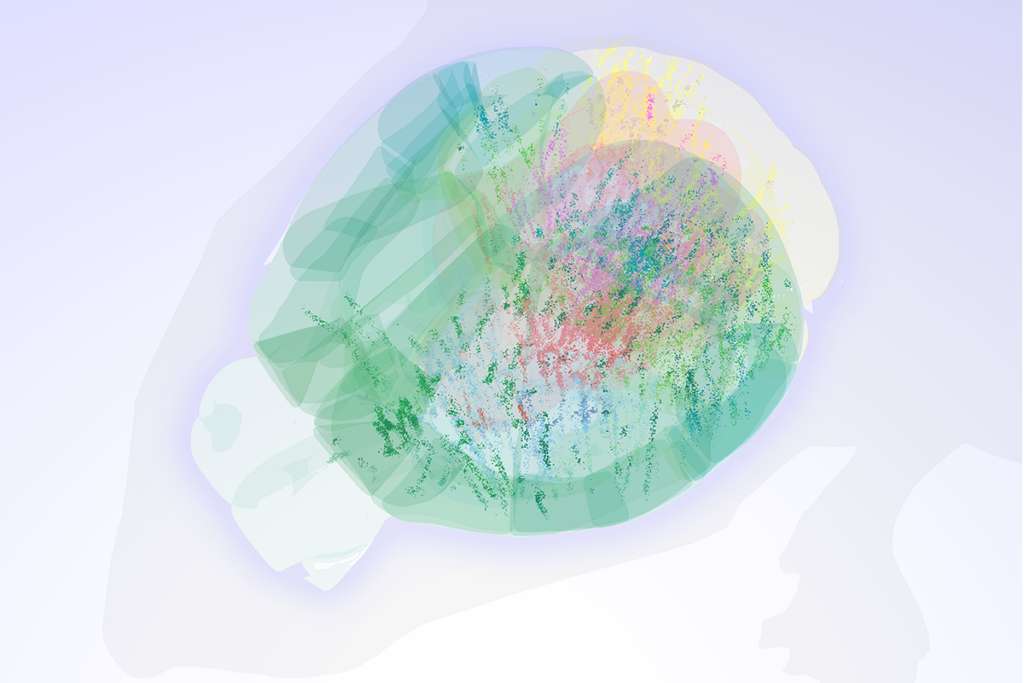Neuroscience is arguably one of the most interdisciplinary research fields. Its practitioners work with everything from electron microscopes to MRI machines to machine learning, studying systems ranging from Caenorhabditis elegans to the human brain to artificial neural networks.

Putting 50 years of neuroscience on the map
Navigate the rise and fall of research topics over five decades using our interactive map, which is based on a semantic analysis of nearly 350,000 abstracts in leading neuroscience journals.
To survey this diverse and rapidly growing landscape, we turned to a semantic analysis—developed by postdoctoral researcher Panos Bozelos and World Wide Neuro—to identify top terms and their relationships in nearly 350,000 abstracts published over five decades in leading neuroscience journals. (Read more about the methods, get answers to frequently asked questions and explore the code.) Working with data-visualization designer and consultant Moritz Stefaner, we then plotted those relationships on an interactive map.
Among other trends, the resulting topography reveals several areas of research that have grown dramatically over the past five decades. Disease-focused terms, for example, appear as fast-rising hills—a surge that may reflect increased funding for translational research and advances in biomarkers and genetics. Alzheimer’s disease appeared in 6.2 percent of the abstracts we reviewed from 2024, Parkinson’s disease in 4.7 percent and depression in 3.2 percent.
And over the past five years, neuroinflammation—along with related terms oxidative stress and ferroptosis—stand out among ascending terms in the literature, underscoring how immune and inflammatory processes have become central to understanding neurological and psychiatric disorders.
The proportion of publications focused on computational and analytic techniques also shows a steep and more recent increase, likely driven in part by the rise of network and machine-learning approaches in brain imaging and connectomics, among other areas. Unsurprisingly, deep learning, a term that first appears in our analysis in 2014, has shown particularly rapid growth over the past 10 years, rising to appear in 1.5 percent of the 2024 abstracts we reviewed.
The map also highlights slowly forming valleys and topical sinkholes. The term action potential, for example, peaked in the 1980s and has declined ever since. Other drops include research on the hypothalamus, a popular topic in the 1970s and 1980s; and in fMRI and plasticity, which peaked in the literature in 2012 and 2015, respectively, but have since begun a slow decline.
Our literature-based landscape also raises several questions. Why did the term norepinephrine peak around 1975 and then fade, despite its importance and how much is left to learn? And what applications or new variations have kept EEG a top-trending term even though it’s an old technology? Explore the interactive to discover your own trends and questions—and share them with us at [email protected].
Recommended reading

What are the most-cited neuroscience papers from the past 30 years?

Image integrity issues create new headache for subarachnoid hemorrhage research

First Pan-African neuroscience journal gets ready to launch
Explore more from The Transmitter

The Transmitter’s reading list: Six upcoming neuroscience books, plus notable titles in 2025

Everything everywhere all at once: Decision-making signals engage entire brain
